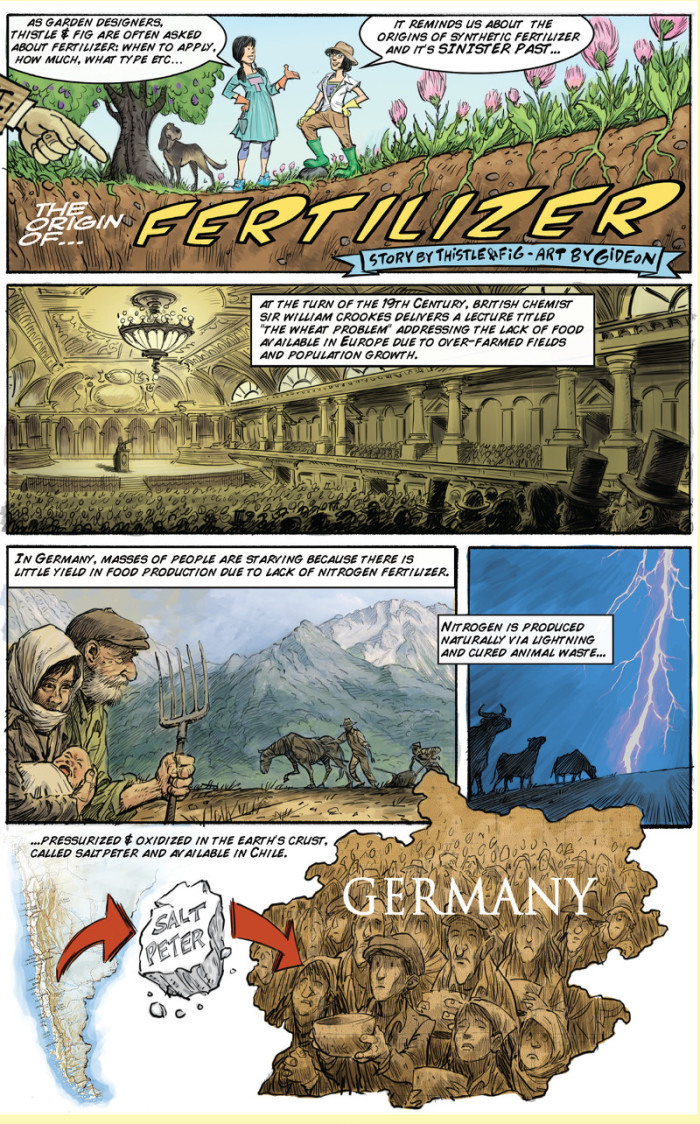It was with overwhelming excitement on my part that I chose to include the first installment of Thistle & Fig – a cartoon series created by Alice Marcus Krieg and Carmen Devito and illustrated by Gideon Kendall, in the spring 2015 issue of PITH + VIGOR.
But this decision has not gone unquestioned and I wanted to address the feedback. There has been an expressed concern about the depiction of Hitler and the illustration of a human death that is part of this history of nitrogen garden fertilizers.
Obviously it was not and is not our intent to offend or upset anyone and I am sorry that has happened, but we are also are very proud of putting out a publication that does not shy away from telling truthful, important, and relevant stories from around the garden world in new and creative ways. As the editor of this publication I stand firmly behind the creative and artistic expression of Alice, Carmen and Gideon as well as the choice to tell this story in this format. I appreciate the feedback and will continue to consider it and respond to it as long as it remains heartfelt and constructive.
Thistle & Fig will return again in our Autumn 2015 issue and just like last time, I am very excited to share it with you.
-Rochelle
The full cartoon about the origin of fertilizer can be read in the spring 2015 issue.


Initially I was a little taken aback by Thistle and Fig, but after I caught my breath I realized that there are many things in the greater world, and in our own domestic world that have histories that we have never known. Considering the interconnectedness of all things it is not surprising that fertilizers are connected to WWII in this way. In fact, it is my understanding that lawn pesticides and herbicides are also connected to WWII in that the companies that were profitably selling various poisons during the war then wanted to find a way to continue that profitability and thus encouraged the desire for a weedless lawn – which had never rarely before. For myself, I don’t have a ‘lawn’, I have a flowery mead, which some have been know to call your typical weedy patch.